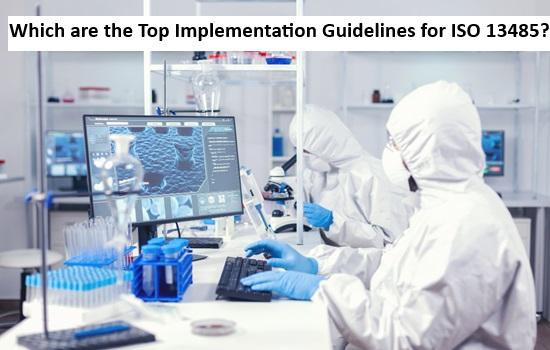You may be uncertain about where to begin and how to proceed with the process of implementing a Quality Management System (QMS) and obtaining ISO 13485 certification for your business. Putting ISO 13485 to use can be very difficult. The initial steps can be difficult at times, but this article will guide you through the benefits of becoming certified, how to accomplish it, and some typical problems people run into when they're unsure of how to apply ISO 13485.
An internationally accepted standard for medical device industry-specific quality management systems (QMS) is ISO 13485. It offers a structure for creating, producing, and delivering secure and efficient medical equipment. By putting ISO 13485 into practice, operational efficiency, product quality, and regulatory compliance are all increased. Here are detailed instructions for putting ISO 13485 into practice in your company.
Step 1: Initially be Aware of the Standard Requirements: Read the ISO 13485 requirements thoroughly before beginning the implementation. Important focus areas include:
· Procedures for risk management and product development that have been documented.
· Controls for development, design, and verification.
· Customer feedback and traceability procedures.
· Reporting and compliance with regulations.
Step 2: Perform an Analysis of Gaps: To compare your present QMS to ISO 13485 criteria, do a gap analysis. Determine what needs to be improved or new procedures implemented to meet the standard. This will assist in efficiently allocating resources and setting priorities for activities.
Step 3: Secure Commitment from Management: An important part of implementing ISO 13485 is top management. They have to set goals, supply the required resources, and create a culture of excellence. The objectives of the standard are guaranteed to be met by the entire organization when management commitment is proven.
Step 4: Implement Awareness and Training Initiatives: Every employee in your company needs to understand how the QMS operates and how they fit into the total picture for the system to be successful. Every employee must receive basic training on ISO 13485 so they understand the goal of implementation. They must also be informed of any adjustments that must be made to the procedures they are involved in. The time it takes to implement ISO 13485 may also be impacted by employees' delayed training.
Step 5: Establish an Implementation Team: Put together a multidisciplinary group to handle ISO 13485 implementation. Key departments including production, quality assurance, regulatory affairs, and logistics should be included on this team. Give each team member a defined position and set of duties.
Step 6: Create a Plan for the Project: Establish a thorough implementation strategy with deadlines and checkpoints. Divide the procedure into manageable stages, such as process audits, staff training, and documentation preparation. Review the project's progress frequently to make sure it continues on course.
Step 7: Put Risk Management in Action: For ISO 13485, risk management is essential. During the design and development of a product, assess risks using tools such as Failure Modes and Effects Analysis (FMEA). Create techniques to reduce risk and incorporate them into your operations.
Step 8: Conduct Internal Audits: To evaluate your QMS's effectiveness, do internal audits. Before the certification audit, these audits assist in locating non-conformities and areas in need of improvement. Make sure auditors are impartial and proficient in the procedures they assess.
Step 9: Review Management: To make sure the QMS is in line with corporate objectives and ISO 13485 regulations, top management should examine it regularly. Use management reviews to deal with:
· Outcomes of the audit.
· Remarks from customers.
· Funds are required.
· Opportunities for improvement.
Step 10: Get Ready for the Certification Audit: Hire a reputable certification organization to carry out the ISO 13485 certification audit. Staff interviews, on-site inspections, and a review of ISO 13485 documents are typically included in the audit. Any non-conformities found during the audit should be fixed immediately.
Step 11: Uphold and Enhance the QMS: ISO 13485 is an ongoing process rather than a one-time event. Processes should be routinely reviewed, updated, and adjusted to reflect evolving regulatory requirements. To guarantee continued efficacy and compliance, promote a culture of constant improvement.
Medical devices can meet regulatory criteria and improve their quality and safety by using ISO 13485. Your company can increase consumer and stakeholder trust, reduce risks, and streamline operations by adhering to this guideline. The long-term advantages of ISO 13485 certification can only be realized through successful implementation, requiring dedication, careful planning, and ongoing development.
Source Link: https://13485certificationprocedures.wordpress.com/

